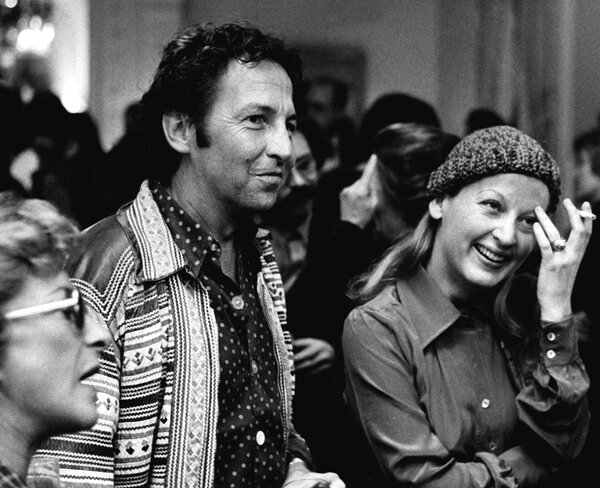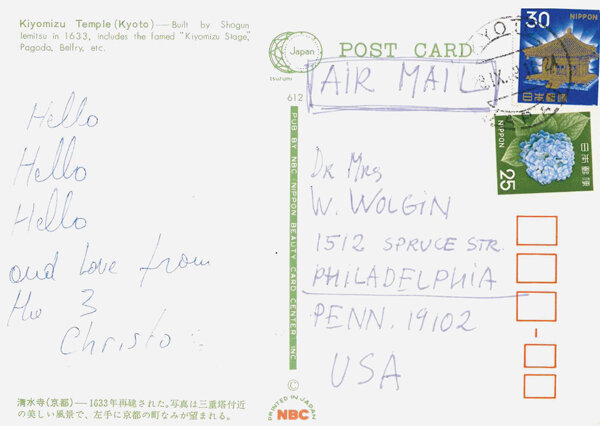228
228
This work is from the edition produced by Acme Studios and published by The Andy Warhol Foundation for the Visual Arts; c. 1990
estimate: $700–900
result: $1,134
follow artist

As consummate patrons of the arts, Acey and Bill Wolgin did not just live with the art that they collected—they lived alongside the artists who made it. Through their generous support of both individual artists as well as institutions they cherished, the Wolgins became widely celebrated collectors known for their friendships with artists—including Andy Warhol, Jasper Johns, Claes Oldenburg, Roy Lichtenstein, Arman, and Robert Rauschenberg—that were sustained, not least, by legendary parties thrown at their Philadelphia apartment.
Bill Wolgin, who practiced as a urologist, met Acey through her brother with whom he attended medical school. The pair married and made strong roots in Philadelphia—indeed, the Wolgins may be credited for having a significant role in elevating the City of Brotherly Love to the cultural destination that it is today. In the 1960s, Acey was a founding member of the Arts Council at the Young Women’s Hebrew Association, which helped spark the city’s contemporary art scene. In 1974, Acey became one of the first women elected to the board of the Philadelphia Art Museum, where she served as a trustee and trustee emeritus for the rest of her life. When Robert Indiana’s LOVE stamp was released at that museum, Acey’s birthday party doubled as the event after-party. Among the attendees was the artist Arman, who absconded with a piece of the LOVE stamp-themed cake in order to seal it in resin.

The Wolgins would later relocate to Boca Raton, where they became actively involved in the Boca Raton Museum of Art and eventually funded the Wolgin Education Center. After returning to Philadelphia, Bill Wolgin would become involved in the Woodmere Art Museum as a trustee, helping to guide the institution’s expansion. Works from the Wolgin Collection are now held in all three of the institutions where they became involved, including Yves Klein’s Portrait Relief I: Arman at the Philadelphia Museum of Art, Fletcher Benton’s Donut with Balls and Half Moon at the Boca Raton Museum of Art, and a group of large-scale sculptures by Sam Maitin at the Woodmere Art Museum.

Surrounded by his parents’ collection from a young age, Richard Wolgin recalls meeting many of the artists whose works he knew intimately—especially memorable was the flaming red hair of Jeanne-Claude when she and Christo dropped in one weekend. (When they weren’t celebrating together, the Wolgins kept correspondences with many of their artist-friends, who sent postcards and, sometimes, drawings.) As kids, Richard and his sister would, naturally, delight in playing with one of Harry Bertoia’s sound sculptures. When Richard was twelve years old, Acey gave him his first work: Roy Lichtenstein’s CRAK!, which he affixed to his bedroom wall with thumb tacks—inadvertently bringing the work back into the realm of mass media and pop cultural detritus that so inspired Lichtenstein.
The works featured in The Acey and Bill Wolgin Collection represent a life lived through, and for, art—“It’s not just buying something to hang on the wall,” says Richard, “it’s a piece of their lives, that are now part of our lives.”
Andy Warhol 1928–1987
Born Andrew Warhola in Pittsburgh, Pennsylvania to an impoverished immigrant family, Andy Warhol became an icon of the Pop Art movement and one of the most prolific artists of his time. Though he suffered from physical ailments throughout childhood, he went on to study fine arts at the Carnegie Institute of Technology and shortly thereafter moved to New York in 1949. His career in commercial illustration took off creating whimsical designs for Glamour, Vogue, Harper's Bazaar and The New Yorker magazines. In the early 1950s, he began exhibiting his work in the city and received his first solo show at the Hugo Gallery in 1952 featuring his earliest depictions of actress Marilyn Monroe.
The 1960s ushered in a wave of his iconic work pioneering the dialogue between high and low art. His screen printed, painterly images established his reputation commenting on popular culture with subject matter including celebrities, politics, advertisements, and parties. In 1964, Warhol rented a studio that became known as “The Factory” where his work was mass produced by a team of assistants. During the middle of the decade, Warhol focused on filmmaking and performance art, creating approximately 600 films. He later collaborated with musicians including The Rolling Stones and The Velvet Underground, published several books, produced televisions shows, and founded Interview Magazine in 1967. After experiencing a near-fatal shooting at The Factory, he became more reserved and his body of work shifted into commissioned portraits, and in his final years he focused on religious subject matter. Andy Warhol died in New York City in 1987 after facing postoperative complications.
A few years following his death, The Andy Warhol Museum was opened in Pittsburgh and in 2002 Warhol’s achievements were honored with an 18-inch stamp issued by the U.S. Postal Service.
Auction Results Andy Warhol